A First Idea of Quantum Field Theory – 20 Part Series
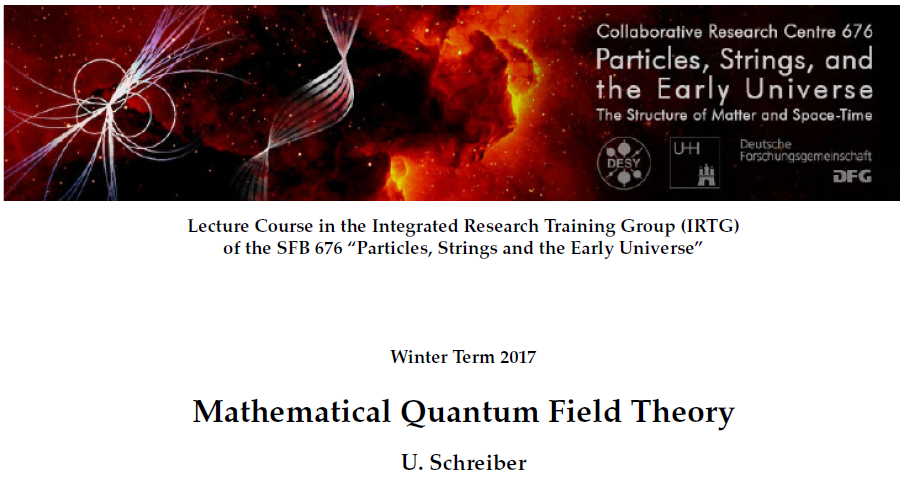
These notes mean to give an expository but rigorous introduction to the basic concepts of relativistic perturbative quantum field theories, specifically those that arise as the perturbative quantization of a Lagrangian field theory — such as quantum electrodynamics, quantum chromodynamics, and perturbative quantum gravity appearing in the standard model of particle physics.
Table of Contents
Table of Contents
- 1. Geometry
- 2. Spacetime
- 3. Fields
- 4. Field variations
- 5. Lagrangians
- 6. Symmetries
- 7. Observables
- 8. Phase space
- 9. Propagators
- 10. Gauge symmetries
- 11. Reduced phase space
- 12. Gauge fixing
- 13. Quantization
- 14. Free quantum fields
- 15. Interacting quantum fields
- 16. Renormalization
For the broad introduction of the idea of the topic of perturbative quantum field theory see there and see
- PhysicsForums-Insights: Introduction to Perturbative Quantum Field Theory
Here, first, we consider classical field theory (or rather pre-quantum field theory), complete with BV-BRST formalism; then its deformation quantization via causal perturbation theory to perturbative quantum field theory. This mathematically rigorous (i.e. clear and precise) formulation of the traditional informal lore has come to be known as perturbative algebraic quantum field theory.
We aim to give a fully local discussion, where all structures arise on the “jet bundle over the field bundle” (introduced below) and “transgress” from there to the spaces of field histories over spacetime (discussed further below). This “Higher Pre quantum Geometry” streamlines traditional constructions and serves the conceptualization in the theory. This is joint work with Igor Khavkine.
In full beauty these concepts are extremely general and powerful; but the aim here is to give a first precise idea of the subject, not a fully general account. Therefore we concentrate on the special case where spacetime is Minkowski spacetime (def. 2.17 below), where the field bundle (def. 3.1 below) is an ordinary trivial vector bundle (example 3.4 below) and hence the Lagrangian density (def. 5.1 below) is globally defined. Similarly, when considering gauge theory we consider just the special case that the gauge parameter-bundle is a trivial vector bundle and we concentrate on the case that the gauge symmetries are “closed irreducible” (def. 10.6 below). But we aim to organize all concepts such that the structure of their generalization to curved spacetime and non-trivial field bundles is immediate.
This comparatively simple setup already subsumes what is considered in traditional texts on the subject; it captures the established perturbative BRST-BV quantization of gauge fields coupled to fermions on curved spacetimes — which is the state of the art. Further generalization, necessary for the discussion of global topological effects, such as instanton configurations of gauge fields, will be discussed elsewhere (see at homotopical algebraic quantum field theory).
Alongside the theory we develop concrete examples of the real scalar field, the electromagnetic field, and the Dirac field; eventually combining these to a discussion of quantum electrodynamics.
running examples
| field | field bundle | Lagrangian density | equation of motion |
| real scalar field | expl. 3.5 | expl. 5.4 | expl. 5.17 |
| Dirac field | expl. 3.50 | expl. 5.9 | expl. 5.30 |
| electromagnetic field | expl. 3.6 | expl. 5.6 | expl. 5.18 |
| Yang-Mills field | expl. 3.7, expl. 3.8 | expl. 5.7 | expl. 5.19 |
| B-field | expl. 3.9 | expl 5.8 | expl. 5.20 |
| field | Poisson bracket | causal propagator | Wightman propagator | Feynman propagator |
| real scalar field | expl. 8.8, expl. 8.15 | prop. 9.54 | def. 9.57 | def. 9.61 |
| Dirac field | expl. 8.8, expl. 8.16 | prop. 9.70 | def. 9.71 | def. 9.72 |
| electromagnetic field | prop. 12.9 | prop. 12.9 |
| field | gauge symmetry | local BRST complex | gauge fixing |
| electromagnetic field | expl. 10.14 | expl. 10.30 | expl. 12.8 |
| Yang-Mills field | expl. 10.15 | expl. 10.31 | … |
| B-field | expl. 10.16 | expl. 10.32 | … |
| interacting field theory | interaction Lagrangian density | interaction Wick algebra-element | |
| phi^n theory | exp. 5.5 | expl. 14.13 | |
| quantum electrodynamics | expl. 5.11 | expl. 14.14 |
References
Pointers to the literature are given in each chapter, alongside the text. The following is a selection of these references.
The discussion of spinors in chapter 2. Spacetime follows Baez-Huerta 09.
The functorial geometry of supergeometric spaces of field histories in 3. Fields follows Schreiber 13.
For the jet bundle-formulation of variational calculus of Lagrangian field theory in 4. Field variations, and 5. Lagrangians we follow Anderson 89 and Olver 86; for 6. Symmetries augmented by Fiorenza-Rogers-Schreiber 13b.
The identification of polynomial observables with distributions in 7. Observables were observed by Paugam 12.
The discussion of the Peierls-Poisson bracket in 8. Phase space is based on Khavkine 14.
The derivation of wavefront sets of propagators in 9. Propagators take clues from Radzikowski 96 and use results from Gelfand-Shilov 66.
For the general idea of BV-BRST formalism, a good review is Henneaux 90.
The Lie algebroid-perspective on BRST complexes developed in chapter 10. Gauge symmetries, may be compared to Barnich 10.
For the local BV-BRST theory laid out in chapter 11. Reduced phase space we are following Barnich-Brandt-Henneaux 00.
For the BV-gauge fixing developed in 12. Gauge fixing we take clues from Fredenhagen-Rejzner 11a.
For the free quantum BV-operators in 13. Free quantum fields and the interacting quantum master equation in 15. Interacting quantum fields we are following Fredenhagen-Rejzner 11b, Rejzner 11, which in turn is taking clues from Hollands 07.
The discussion of quantization in 13. Quantization takes clues from Hawkins 04, Collini 16 and spells out the derivation of the Moyal star product from geometric quantization of symplectic groupoids due to Gracia-Bondia & Varilly 94.
The perspective on the Wick algebra in 14. Free quantum fields go back to Dito 90 and were revived for pAQFT in Dütsch-Fredenhagen 00. The proof of the folklore result that the perturbative Hadamard vacuum state on the Wick algebra is indeed a state is cited from Dütsch 18.
The discussion of causal perturbation theory in 15. Interacting quantum fields follows the original Epstein-Glaser 73. The relevance here of the star product induced by the Feynman propagator was highlighted in Fredenhagen-Rejzner 12. The proof that the interacting field algebra of observables defined by Bogoliubov’s formula is a causally local net in the sense of the Haag-Kastler axioms is that of Brunetti-Fredenhagen 00.
Our derivation of Feynman diagrammatics follows Keller 10, chapter IV, our derivation of the quantum master equation follows Rejzner 11, section 5.1.3, and our discussion of Ward identities is informed by Dütsch 18, chapter 4.
In chapter 16. Renormalization we take from Brunetti-Fredenhagen 00 the perspective of Epstein-Glaser renormalization via an extension of distributions and from Brunetti-Dütsch-Fredenhagen 09 and Dütsch 10 the rigorous formulation of Gell-Mann & Low renormalization group flow, UV-regularization, effective quantum field theory, and Polchinski’s flow equation.
Acknowledgment
These notes profited greatly from discussions with Igor Khavkine and Michael Dütsch.
Thanks also to Marco Benini, Klaus Fredenhagen, Arnold Neumaier, and Kasia Rejzner for helpful discussion.
I am a researcher in the department Algebra, Geometry and Mathematical Physics of the Institute of Mathematics at the Czech Academy of the Sciences (CAS) in Prague.
Presently I am on leave at the Max Planck Institute for Mathematics in Bonn.

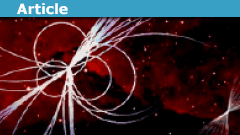
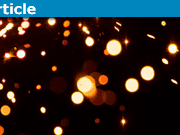

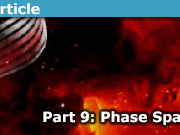
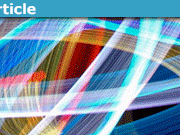
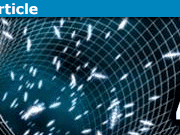
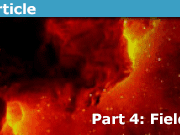
I believe you once said there are results that are proved only by doing QFT rigorously.Just to nitpick, I'll say that every proof is necessarily rigorous, otherwise it is not a proof but a plausibility argument that may still fail upon examination.
Could you please name some of such results and if possible point me to the explicit sources of those results?A list of theorems in QFT, with further pointers is at
Algebraic Quantum Field theory — Contents –> Theorems
The main one that we proved in the series (Prop. 16.19) is the main theorem of perturbative renormalization. This implies the theorem that renormalization via UV-regularization exists (Prop. 16.23).
Then there is a list of famous structural theorems that are proven from the Haag-Kastler axioms. The Reeh-Schlieder theorem (recently picked up by Witten, see section 2 of arXiv:1803.04993), the Osterwalder-Schrader theorem ("Wick rotation exists"), the PCT theorem and, last not least, the spin-statistics theorem. The classical reference here is this textbook:
"PCT, Spin and Statistics, and All That",
Princeton University Press
Hello,
I believe you once said there are results that are proved only by doing QFT rigorously. Could you please name some of such results and if possible point me to the explicit sources of those results? Thanks in advance.
Following public request, I have compiled a stand-alone list of references, see above under References.
But notice that detailed pointers to the literature are included in each chapter, alongside the text, attached to the relevant definitions or propositions.
The links to expl. 8.16 and 10.16 (and perhaps others) do not work!Thanks for the alert! Indeed, all PF-internal links had been broken since my last update. Not sure why this happened. But I have fixed it now. (Or so I think.)
The links to expl. 8.16 and 10.16 (and perhaps others) do not work!
(By the way, an awful lot of them don't work ! )The keywords go to ncatlab for more information. The chapter links aren't active yet because they haven't been released, but once they are they will be active. Hold tight, first chapter releases tomorrow! :)
an awful lot of them don't work !Those links not activated yet are pointing to articles that appear further down in the series. They will become active incrementally as the series progresses.
Wouldn't just one link have been enough ?It's hard to tell for me what you may have in mind here. But it should not be important. The links are an offer, leading to further information, not a request to click on them. If you feel like not following any, that's fine.
I see 66 links between 'This series' and 'Acknowledgement'. Wouldn't just one link have been enough ?
(By the way, an awful lot of them don't work ! )